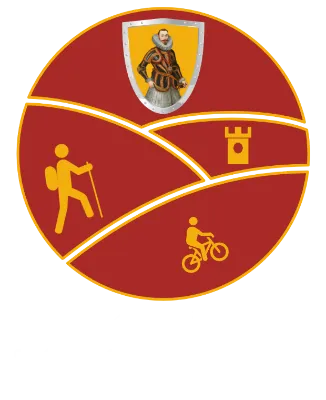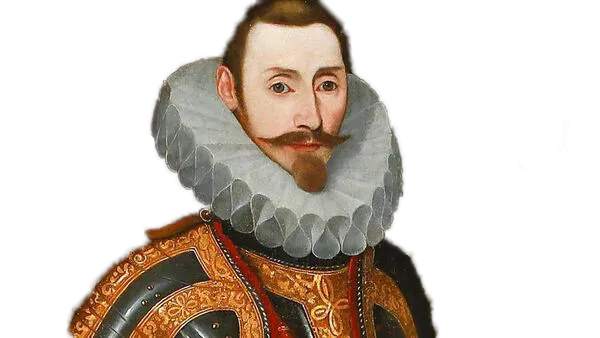Clans that Marched with O'Sullivan Beare
All along the Beara-Breifne Way, there are clan connections to the March of O’Sullivan Beare that remain unbroken to this day.
Visit the On-Line Genealogy Research Service at https://www.rootsireland.ie
The North Tipperary Genealogy Centre, The Governor’s House, Kickham St., Nenagh, Co. Tipperary, Ireland.
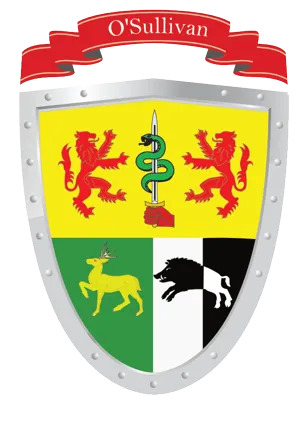
O'Sullivan
The O'Sullivan clan descended from the followers of Milesius who were the first Celts to colonize Innisfail, their "island of destiny". They had migrated from an area of the northwest coast of Spain which is now known as the province of Galicia.
Motto: Lamh foistenach abu, What we gained by conquest we secure by clemency.
In Irish O'Sullivan is O Suileabhain. The derivation of the name is in dispute among scholars. There is no doubt that the root word is suil (eye), but whether it is to be taken as one-eyed or hawk-eyed must be left an open question. While not quite as numerous as Murphy and Kelly, Sullivan, which is by far the commonest surname in Munster, comes third in the list for all Ireland. Almost eighty per cent of the Sullivans (or O'Sullivans) in Ireland to-day belong to the counties of Cork and Kerry, the remaining being mostly of Co. Limerick, or of the city of Dublin, in which, of course, families from all the four provinces are found.Thus the O'Sullivans, as is almost always the case with the great Gaelic septs, are still concentrated in or near their ancient homeland. It was not until after the Anglo-Norman invasion that the O'Sullivans came to the fore. Their origin, however, is illustrious: descended from Eoghan (Owen) Mor, the father of the famous Oilioll Olum, they were with the O'Callaghans, the MacCarthys and the O'Keefes, one of the leading families of the Munster Eoghanacht. Some at least of them were lords of a territory near Cahir prior to the invasion: from 1200 onwards, however, they are to be found in the extreme south-west of Munster. There they became very numerous and powerful, dividing into a number of branch septs of which O'Sullivan Mor and O'Sullivan Beare were the most important. The former had his principal castle at Dunkerron on the shore of Kenmare Bay, the latter was lord of the modern baronies of Beare and Bantry.
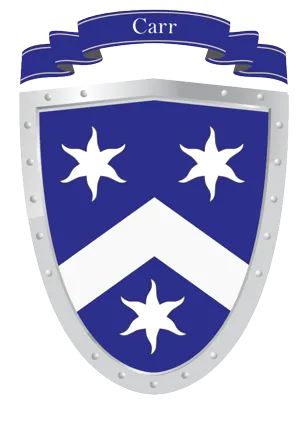
Carr
The well known Carr surname has long existed in Ireland, and originates from several distinct sources. In County Galway it was an Anglicization of O Carra, a patronymic name referring to a descendant of Carra; the word Carra in turn meant "spear." in County Donegal, Carr was the Anglicized form of Mac Giolla Chathair.
Many who bear the Carr name in Ireland are descendents of emigrants of Scottish or English stock, who brought the name with them. In Ireland, many bearers changed their name over time from Kerrane or Kerr to Carr. In turn the name Carr in Ireland has in some instance morphed into Carey.
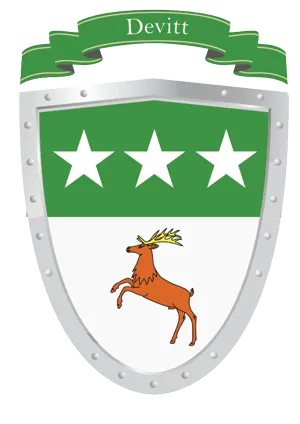
Devitt
This surname Devitt with the prefix mac, is usually a County Mayo surname, a variant of MacDevitt. It is also the name of a branch of the Connacht Burkes. The meaning of the name is 'the son of David'.
Variations on the surname are MacDavid, Mac Davitt, MacDaid, MacDevitt, MacDivitt, Davitt, Devitt, Daid & Dade.

Ellis
This English name is numerous only in Dublin and Uister, where it is particularly common in Co. Antrim. The Hebrew name Elijah was made in Greek Elias and this personal name was very popular in medieval England. It became in Old English Elys or Elis and this came to be the basis of the surname Ellis. It is fairly common in both Scotland and Ireland from about the thirteenth century onwards but most in Ulster arrived in the post-Plantation period.
Motto: Non haec sine numine, These things are not without the deity.
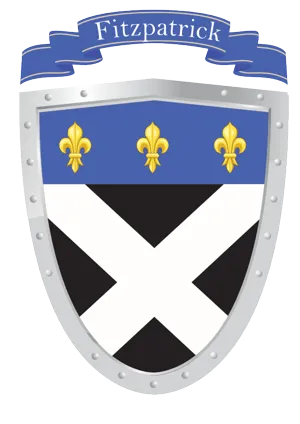
FitzPatrick
The Fitzpatrick clan is one of the most ancient and illustrious Irish clans, with their roots tracing back to the ancient kingdom of Ossory in the southeast of Ireland. The clan's association with Upper Ossory dates back to the 12th century, when Aengus Osrith, the King of Ossory, granted land to the clan's patriarch Gilla Patráic. Over time, the Fitzpatricks established themselves as leading figures in the area, gaining wealth and power through their leadership and skill in warfare.
The Fitzpatricks played an instrumental role in local politics and society, with prominent figures such as John Fitzpatrick and Barnaby Fitzpatrick serving as powerful lords and justices of the peace. John Fitzpatrick, in particular, was a key figure in the area during the 16th century, serving as Lord of Upper Ossory and helping to secure the support of the Fitzpatrick clan for Henry VIII during his campaign to establish the Church of England.
The Fitzpatricks were also involved in a number of significant conflicts and wars in Irish history, including the Nine Years' War in the late 16th century. During this conflict, the Fitzpatricks were staunch supporters of the Irish cause, with Barnaby Fitzpatrick taking up arms against the English forces in defense of his people and heritage.
Motto: Ceart Láidir Abú, Might is right.
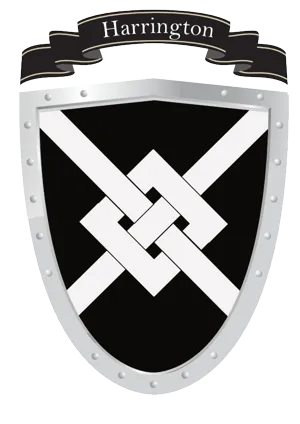
Harrington
The original, English form of the surname Harrington has multiple origins and was originally probably from Cumbria.
Most Harringtons in Ireland are NOT related to these English Harringtons.
In Ireland, three separate Irish surnames were anglicised to the English sounding Harrington. In Connacht the O hOireachtaigh clan anglicised their name to Harrington and can be found in Galway and Mayo.
In the Tralee-Dingle area the O hArrachtain clan also anglicised their name to Harrington.
In Cork, the O'hlongardail clan anglicised to Harrington as well as other variations e.g O’Hingerdell that later became Hingerty.
The Cork group of Harringtons also used the names Urdail and O'hUrdail as a way of linking back to their original clan name.
These three separate clans are not related to each other nor are they related to the Harrington surname in England.
The ‘Harringtons' who arrived in Tipperary with O’Sullivan would have been O’hlongardail clan members using the names Harrington, Urdail, O’hUrdail, or spelling variations of O’Hingerdell.
Hingerty
The surname Hingerty is an Anglicisation of the Gaelic clan name O hlongardail (descendant of Iongardal).
It is associated with the surname Harrington.
In Cork in the 1500s the surname Harrington and older spelling forms of Hingerty were used interchangeably.
The clan chief O’Hingerdell and his brother and an unknown number of O’Hingerdell clan members left the Beara Peninsular with O’Sullivan on New Years eve 1602.
At some point after their arrival in Tipperary, most members of the O’Hingerdell clan adopted the name Harrington while others chose to use the surname Hingerty.

Heaney
The Irish surname Heaney is the Anglicized form of Gaelic Ó hÉanna meaning 'descendant of Éanna' . The meaning of Eanna is not certain, but it was a very common personal name, eg St Éanna /Enda of Aran.
As with a number of other Irish surnames a misunderstanding of the Irish original name has led to some Anglicisations varying. The 'ean' was taken to mean 'bird', so Ó hÉanna was sometimes Anglicised as Bird.
Ó hÉanna was the name of a branch of the Ui Fiachrach, who were the owners of Imleachloisce in County Mayo. It was also the name of a family of the Eoghanacht, in present day County Limerick, and most notably, a family of the Dalcassians. The Dalcassians were a Gaelic tribe from Thomond (present day County Clare, County Limerick and parts of Tipperary.)
The Dalcassian Ó hÉanna had some notable ecclesiastics, Sources vary on dates, but in 1196 'Matthew O' Heney (d, 1202) became Archbishop of Ireland. Prior to him Donald is recorded as having had the see of Cashel, and Conor was Bishop of Killaloe, in County Clare. Conor died returning from The Fourth Council of the Lateran, which took place in 1215.
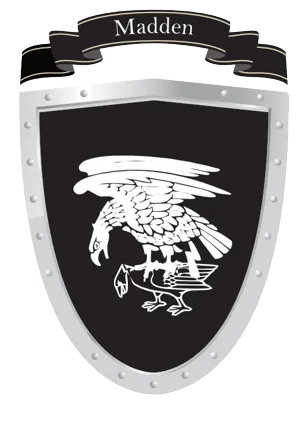
Madden
The family name Madden is derived from two Irish roots and one English one. The Madden family of Athgarret in County Kildare are the descendants of an Irish family whose Gaelic name was Ó Madáin. This sept originated in County Galway, in Ireland’s western province of Connacht. They were a branch of a population group known as the Uí Maine (Hy Many in English) whose home territory covered the centre of County Galway, southern parts of County Roscommon and western parts of County Offaly. Their lands were in the Barony of Longford, in south-west Galway, and in the Offaly Barony of Lusnagh, on the other side of the River Shannon from Galway. County Offaly, called Queen’s County during the English administration, is in the Eastern Irish province of Leinster.
Mottos: "Christo duce vincamus." - "With Chirst I will conquer", and "Propria virtute audax" - "Daring in the cause of virtue".
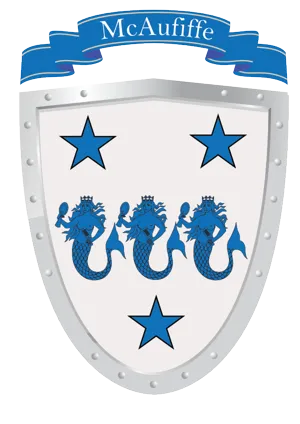
McAuliffe
McAuliffe or MacAuliffe is a surname of Norse Irish origin. The name is an Anglicisation of the Gaelic Mac Amhlaoibh, meaning "son of Amhlaoibh". The Gaelic name, Amhlaoibh, was derived from the Old Norse personal name Olaf. The surname occurs frequently in Munster, especially northern County Cork, western County Limerick, and eastern County Kerry. The McAuliffes were a sept, related to the McCarthys.
Motto: Vi et armis, By strength and by arms.

McCarthy
The MacCarthy dynasty has a fascinating history that starts with Carthach, a king of the Eóganacht Chaisil, whose tragic death in a house fire leads to the birth of a new family, the McCarthy Clan.
Despite their bitter rivalry with High King Brian Boru, the MacCarthys pushed forward, only to be displaced by their arch-enemies. Yet their persistence and perseverance paid off, and they emerged as one of the dominant families in Munster for almost five centuries.
The MacCarthys of four major branches continued to resist Norman and English encroachment until the seventeenth century, a testament to their unwavering courage and fierce loyalty. Even though they lost almost everything, their spirit remains unbroken, forever remembered in the heroic stories that have been passed down through the generations.
One such story includes the Blarney Stone, a magical gift to Cormac MacCarthy, King of Desmond, from King Robert the Bruce of Scotland. The stone's mystical power imbues those who kiss it with the gift of the gab, a fitting tribute to Dermot McCarthy, builder of the third castle at the site, who was renowned for his eloquence.
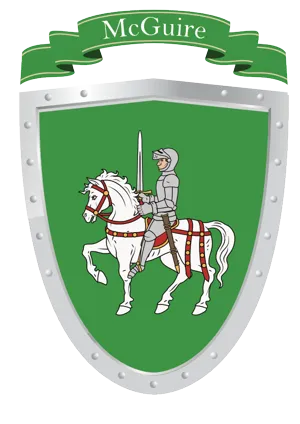
Maguire
The Maguire sept played a significant role in the history of County Fermanagh in modern-day Ireland. They ruled over the entire county starting from around 1250 C.E and maintained their independence as Lords of Fermanagh until the reign of King James VI & I. The family had a long history, first mentioned in the Annals as early as 956 AD, and were closely associated with other leading septs in Ulster such as the O'Neill and the O'Donnell.
The Maguires supplied Chiefs or Princes to Fermanagh, ousting the former Chieftains (Ó Daimhín, or Devin/Devine) as early as 1264 AD and were inaugurated on Cuilcagh, a majestic mountain near Swanlinbar, on the borders of Cavan and Fermanagh. Some inaugurations occurred at a place called Sciath Gabhra or Lisnasciath, now Lisnaskea. The family also spawned several well-known branches, including Mac Manus, Mac Caffrey, Mac Hugh, and others who became septs in their own right.
In the Nine Years' War (1594–1603), Hugh Maguire, the Lord of Fermanagh, sided with the rebels, while his kinsman, Connor Roe Maguire of Magherastephana, supported Queen Elizabeth's forces, earning him the nickname "the Queen's Maguire". Connor was granted the whole of Maguire's Country by letters patent in 1601, but this was disregarded by the Plantation of Ulster in 1609, which granted him only twelve thousand acres of the barony of Magherastephana.
Connor's son Bryan was made Baron Maguire of Enniskillen in 1627; both of his sons supported the Confederate Ireland rebellion of the 1640s. Connor, 2nd Baron, was executed and attainted in 1645, while Rory Maguire was killed in fighting in 1648. Rory's son, Roger Maguire, was a Jacobite politician and soldier. During translation in the Ulster Plantation, various English translations of the original Mag Uidhir appeared, including Maguire, Mac Guire, and McGuire, while in South West Donegal, the name is re-translated into Gaelic as Mac Guibhir.
Motto: Justitia et fortitudo invincibilia sunt, Justice and fortitude are invincible.
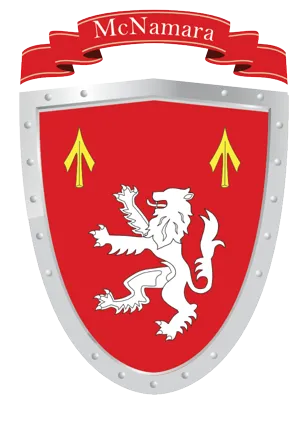
McNamara
The McNamara family was a powerful Irish clan with roots in County Clare. They claim descent from the Dál gCais and were Lords of Clancullen in the Kingdom of Thomond. They are closely related to the O'Gradys, who share their Uí Caisin lineage.
The name Mac Conmara means "Son of the Hound of the Sea" and began with the chieftain Cumara. His son, Domhnall, adopted the surname Mac Conmara and became the first of his name. The McNamaras were influential in Thomond, building castles across the region to display their power and influence, such as Knappogue Castle.
Motto: Firmitas in Coelois, Stability in Heaven.
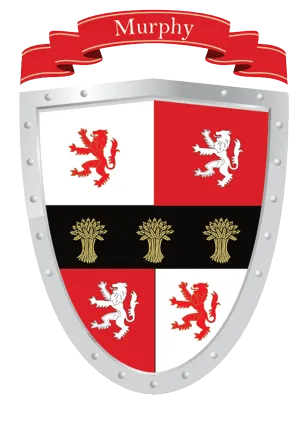
Murphy
The history and meaning behind the surname involves two Irish surnames: "Ó Murchadha"/"Ó Murchadh" (meaning descendant of "Murchadh") and "Mac Murchaidh"/"Mac Murchadh" (meaning son of "Murchadh"). "Murchadh" was an Irish personal name that meant "sea-warrior" or "sea-battler" (with "muir" meaning sea and "cath" meaning battle). Murrough (Murchadh) was known for his extreme courage and intelligence during battle against foreign invaders, the Danes. It's said that a sense of gallantry and championship also rose inside of him during battle.
There were septs in Counties Tyrone and Sligo but by far the most important sept was located in Leinster Province, and especially in County Wexford. A sept is similar to a clan, and refers to a group of people who inhabited the same locality and who shared the same name. In modern times the name has become even more associated with the Munster Counties of Cork and Kerry than its originating County of Wexford. The Munster sept of Murphy is a branch of the Kinsellas who also hail from the Wexford Murphys. The northern Murphys are today most often found in Counties Tyrone and Armagh.
Mottos: Fortiset hospitalus, Brave and hospitable and Vincere vel mori, Victory or death.

Naughton
Naughton is a Gaelic surname that comes from the name Ó Neachtain, which translates to "descendant of Nechtan". This surname is associated with several septs of the Dal gCais clan, including the same stock as Quinn and Hartigan located in County Clare, and the O'Neachtain Sept of the Uí Maine in Galway.
These septs were chiefs of various regions until the Cambro-Norman invasion, after which they settled in other areas such as the Fews in County Roscommon. Naughtons appear in sixteenth century manuscripts, and in the late eighteen eighties, the Naughtons of Thomastown Park owned a large estate between Athlone and Ballinasloe.
Sometimes, the English surname Norton was used instead of Naughton. There are also instances where Behan or Behane were interchangeable with Naughton in County Kerry.
Motto: Audax et Sagax (Translated variously as "Daring and Wise" and "Bold and Shrewd").
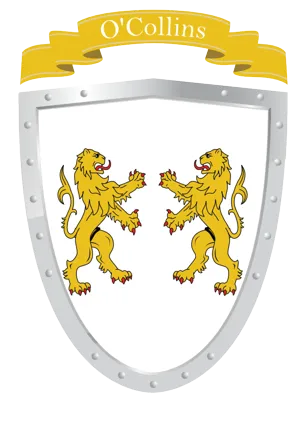
O'Collins
The surname O'Collins has its roots in two ancient families of Irish origin, namely O'Cuilleain and O'Coilean. O'Cuilleain means Holly, which was regarded as sacred in pre-Christian Celtic culture due to its alleged mystic and herbal properties. On the other hand, O'Coilean means young warrior or hound.
The family had a reputation for their skill at battle and are the original source of the name Collins, which is now common throughout England and the world. Due to pressures of defeat against the Anglo-Norman invaders, O'Coilean moved south from County Limerick to settle in the same approximate area as the O'Cuilleain in West Cork and Cork around the end of the 12th Century. For the past eight hundred years, the two families have been virtually impossible to geographically distinguish. The O'Donovans, also from Co. Limerick, and from the same ancient kingdom, known as Uí Fidgenti, are closely related to the O'Collins.
Motto: Colens Deum et Regem, Honoring God and King.
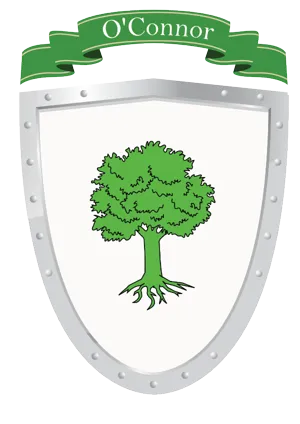
O'Conor
The O'Conor family is a famous Irish noble house that held the throne of the Kingdom of Connacht from 1102 to 1475. They ruled continuously for over 300 years and produced two High Kings of Ireland, Tairrdelbach Ua Conchobair and his son Ruaidrí Ua Conchobair, the last High King. The family seat is Clonalis House in County Roscommon.
The Ó Conor Don is the head of a lineage which provided about one hundred Kings of Connacht, thirty Chiefs of the Name and two High Kings of Ireland. During the late 14th century, the Ó Conor dynasty was divided into two main groups led by Toirdhealbhach Óg Donn Ó Conchobair and Felim MacAedh Ó Conchobair, from which descended the families of Ó Conchubhair Donn and Ó Conchubhair Ruadh.
The O'Conor family followed the Brehon law system until the 16th century and did not follow primogeniture. Instead, the Kings or Chiefs were elected by a close kinship group, which often resulted in bitter feuds and civil wars within the Kingdom, ultimately weakening the family's power in Connacht and in Ireland.
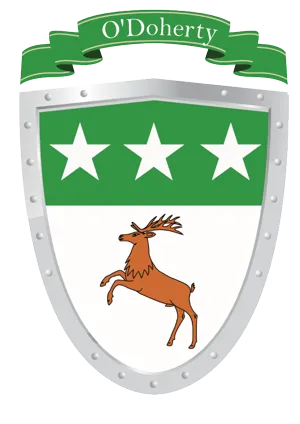
O'Doherty
The O’Doherty clan is divided into many septs and regional families, with over 250 variations in spelling of the name Ó Dochartaigh. The most common anglicisation is Doherty, with or without the "Ó".
The O’Doherty clan and family name is one of the oldest in Europe, tracing its pedigree through history, pre-history, and mythology to the second millennium BC. Their story was first put into writing by Christian monks between the 6th and 11th centuries AD and has been transmitted orally for thousands of years.
Motto: Ár nDuthchas, Our heritage.
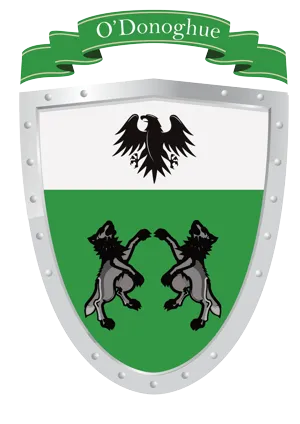
O'Donoghue
Donoghue or O'Donoghue is an anglicized form of the Irish language surname Ó Donnchadha or Ó Donnchú. The name means "descendant of Donnchadh", which is a personal name composed of the elements donn "brown-haired [man]" and cath "battle". There are numerous spelling variations for this surname, including Donoghue, Donaghue, Donaghoe, Donoughe, Donaho, Donahoe, Donough, Donahue, Donahow, Doneghoe, Donehue, Donighue, Donihue, Donoho, Donohoe, Donahugh, Donohough, Donohow, Donohue, Donaughue, Donaghie, Donaghy, Doughue, Dougue, Donihoo, and more. These variations exist in Northern Ireland and Scotland with the same meaning in Scottish Gaelic as in Irish.
There are four distinct O'Donoghue families in Ireland. The first is the Ó Donnchadha of Cashel, who are related to the O'Sullivans, MacCarthys, and O'Callaghans. They descend from Donnchad mac Cellacháin, King of Munster. The second is the Ó Donnchadha of Desmond, who are related to the O'Mahonys and referred to as "O'Donoghue Mór."
They are prominent in County Kerry and descend from Donnchadh mac Domhnall. The third is the Ó Donnchadha of Osraige, who are related to the Mac Giolla Phádraig dynasty ("the Fitzpatricks") and some kings of Osraige. They are commonly anglicised as Dunphy and are prominent in County Kilkenny. They descend from Donnchad mac Gilla Pátraic. The fourth is the Ó Donnchadha of Uí Maine, who are related to the O'Kellys and prominent in County Galway and County Roscommon.
Motto: Nunquam non Paratus, Never Unprepared.
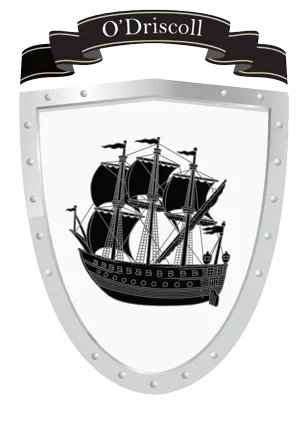
O'Driscoll
The O'Driscolls were rulers of the Dáirine sept of the Corcu Loígde, and their ancestors were Kings of Munster until the rise of the Eóganachta in the 7th century. Three prominent branches of the family came into existence in the 13th century: O'Driscoll Mor, O'Driscoll Og, and O'Driscoll Beara.
The family was of Érainn descent, specifically the Corcu Loígde population group. The surname derives from the forename Eidirsceol, which means "go-between" or "bearer of news." The text mentions that the family became expert sailors and fishermen after being driven south by the Gaelic Eóganachta and the Anglo-Normans.
The O'Driscolls struck an alliance with the Powers of County Waterford in their long feud with the merchants of Waterford city. The family struggled to retain its lands and power against the English from the 15th century onward.
In 1631, the town of Baltimore was sacked by Algerine pirates who burned, raided, and kidnapped O'Driscoll people. The text mentions a brave O'Driscoll girl who fought the pirates. Nowadays, most of those bearing the name O'Driscoll are still living in County Cork.
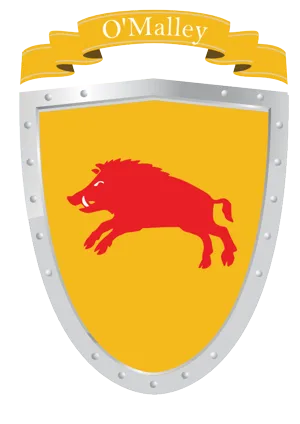
O'Malley
O'Malley is a surname of Irish origin that means a descendant of a follower of St John. It's mostly linked with Ireland's County Mayo and is often connected with sailors because the O'Malley clan had amazing maratime abilities.
The O'Malleys regulated the baronies of Burrishoole and Murrisk in the west of Ireland. They have a variety of spellings, such as O'Mallay, O'Mally, O'Mailley, O'Mealey, and others.
Motto: Terra Marique Potens, Powerful on Land and Sea.
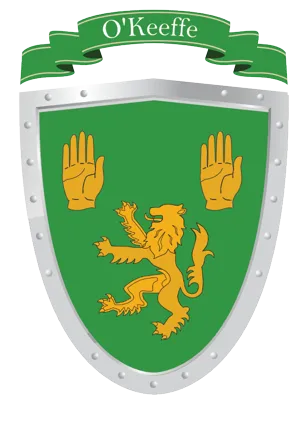
O'Keeffe
The O'Keeffe clan is an Irish Gaelic clan based primarily in County Cork, particularly around Fermoy and Duhallow. Their name, which means "kind", "gentle", "noble", comes from the word "caomh".
The family descended from Cathal mac Finguine, who was a celebrated King of Munster in the 6th to the 8th centuries. The O'Keeffes originally lived in the banks of the Blackwater river but were displaced by the Normans and moved west into the barony of Duhallow.
Their territory became known as Pobal O'Keeffe, where the senior branch of the family had their seat at Dromagh in Dromtarriff Parish. The last chiefs of this branch were Domhnall O'Keeffe of Dromagh and his son Captain Daniel O'Keeffe, who was killed in battle. The family estates were confiscated in 1703 and sold to the Hollow Blades Company.
Even today, Pobal O'Keeffe remains the area in which the name is most common. The O'Keeffes have a beloved story about their descent from the goddess Clíodhna and her marriage to Caomh. Like many Irish nobility, the O'Keeffes were active in the service of the Catholic monarchs of Europe. Constantine O'Keeffe was admitted to the French aristocracy on the basis of his Irish pedigree and long service, and the bearers of the surname "Cuif" in northern France are descendants of O'Keeffe soldiers.
Motto: Forti et fideli nihil difficile. for the brave and the faithful nothing is impossible.
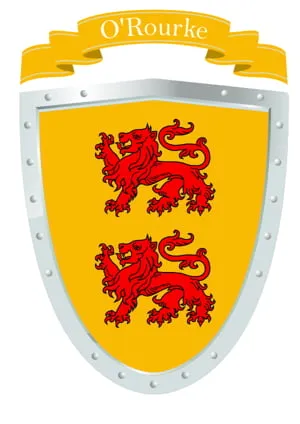
O'Rourke
The O'Rourke Clan was a Gaelic clan based in County Leitrim in Ireland. They were the historic rulers of Breifne and later West Breifne until the 17th century. The O'Rourke Clan Chief was at odds with the O'Reilly Chief because both clans contested each other for the title Prince of Breifne.
The Kingdom of West Breifne or Breifne O'Rourke was a historic kingdom of Ireland that existed from 1256 to 1605. It took its present boundaries in 1583 when West Breifne was shired and renamed Leitrim. The kingdom came into existence after a battle between the ruling O'Rourke clan and the ascendant O'Reillys caused the breakup of the older Kingdom of Breifne.
However, the O'Rourke's lands were confiscated by England in the early 17th century. After defeat in the Nine Years' War, the Gaelic political order collapsed and many O'Rourke nobles left for mainland Europe. The clans throughout Ireland went into a steady decline culminating in The Flight of the Earls in 1607.
The clans within West Breifne were granted land and assurances of their rights to pass on that land to their eldest son under English law in exchange for pledging loyalty to the crown. Each of these clans held only modest estates and could not properly threaten English authority. The O'Rourke's had been relegated to large landowners within County Leitrim, with no official authority over the other clans and a vastly reduced tax base, land area and population.
Motto: Serviendo Guberno, Govern by Serving.

Quigley
Quigley is common in all the four provinces of Ireland but is most numerous in Ulster, particularly counties Derry and Donegal. It is in Gaelic Ó Coigligh, which may derive from the word coigeal, denoting a 'person with unkempt hair'.
One Quigley sept were a branch of the Ii Fiachra clan of county Mayo which dispersed sometime in the 16th century. A possibly related sept was the Quigleys of Inishowen in Donegal. The name in fact is mainly to be found in Donegal and Derry and to some extent in Monaghan and Fermanagh where the Quigleys were the erenaghs at Clontivrin in Clones.
Father James Quigley, a United Irishman executed by the English in 1798, was born in county Armagh from what was seen as “a respectable Northern farmer class.” His family had come from Derry. It was said that his great grandfather had been the maker of the Catholic barricading boom at Culmore fort during the seige of Derry town in 1689
Armshaw
It is said that the Armshaw clan also marched with O'Sullivan Beare. There is no coat of arms available to display for the Armshaw clan. There were 22 with this surname in Ireland in 1911, all based in Tipperary.

© 2023 In Tipperary, All Rights Reserved.
Web Design by Pixelweb Design
